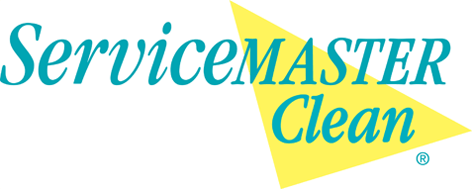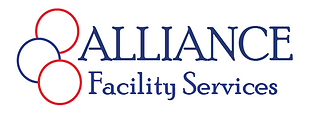Procurement Strategies That Always Work

April 12, 2023 by Medigroup
As a purchasing professional, you have certain procurement goals. You want to know which purchasing strategy will have the greatest impact on your business. Which strategy will help you meet your goals? Should you focus on cost reduction, innovation, productivity, or data optimization? Or all of them?
How will your company’s procurement and management team create a successful procurement strategy? In this article, you’ll discover several simple, concrete approaches to help you develop an effective procurement strategy.
Your business’s procurement strategy should include each step in the procurement process. This will help your company define and prioritize the key actions and expenditures that ensure your procurement process is as economical, effective, and strategic as possible. It is one of many tools that can help make your business more competitive.
Why Develop a Strategic Procurement Strategy?
Your procurement strategy should add value for your company. It should guarantee your company’s overall performance by setting purchasing and spending priorities designed to maintain and improve supply of goods and services.
Your purchasing strategy should also help you develop and maintain positive relationships with your suppliers so you can make responsible business purchases. When you design a procurement policy, you must follow specific strategies and understand what’s at stake. Business purchases can be broken down into:
- Recognizing and defining a need
- Comparing opportunities and solutions
- Researching to identify solutions and suppliers
- Making decisions based on negotiation and contract signing
- Posting-purchase evaluations of services
How Do You Manage Procurement?
You manage procurement and spending primarily through your company’s strategic organization of its resources. You must master your supply chain based on the real data you collect and process.
You should know your entire purchasing portfolio. By setting up a specific system, you can manage your overall procurements and consolidate your orders. Inventory control and product traceability are key points you should consider.
If you want to successfully manage and optimize procurement, you should analyze the most effective procurement strategies. Your analysis will reveal these five essential principles, each of which provides a key to better procurement performance:
- Supplier risk management
- Centralized supplier database
- Procurement supply chain flow
- Building capacity for predictive analytics
- Inclusion in your company’s collective innovation system
Five Great Procurement Strategies
Here are the top five purchasing strategies you can use to meet your procurement goals:
1. Unify Procurement Chain
Your procurement strategy should always aim to optimize the flow of your entire procurement chain, from paying invoices to searching for new suppliers. This is one of many approaches that can improve your company’s procurement performance. While some companies focus on reducing costs and expenditures, others focus on optimizing their invoicing process.
2. Manage Supplier Risk
An aggressive pricing procurement strategy almost always involves taking risks. This is only acceptable to a business when the consequences of supplier failure are limited to supply. Always avoid systemic risks to your company when managing supplier risk.
One good strategy is trying out a new supplier for a product that is easy to get within 24 hours. Just be careful to avoid the unmitigated risk of doing this with a strategic supply during a peak production period.
3. Centralize Supplier Data
Your procurement strategy should use data from a variety of sources to document your suppliers’ innovations, map their locations, or describe their products. When you group your data points into a single database, you give your purchasing team the power to improve your overall procurement strategy. Your supplier purchasing process only works if the data are centralized and available for comprehensive analysis.
4. Develop Predictive Analytics
A key tool for most successful companies is predictive analytics. This helps leverage big data and artificial intelligence. If you want an ambitious procurement strategy, you cannot afford to ignore today’s digital technology. According to McKinsey & Company, North American companies have adopted digitization technology at a rate of 60% vs. 41% in pre-covid years.
5. Integrate With Innovation
Many companies regard innovation on the same level as gaining a competitive advantage or opening a new market. As a result, your most effective procurement strategy will incorporate your procurement team and its processes into a company-wide collective intelligence process. With cross-departmental collaboration, you’ll put your procurement team in the best position to identify and capture potential supplier-led innovation.
What is Procurement Mapping?
If you want to control and consolidate the procurement chain, your company should implement mapping as an essential tool. You can use mapping to:
- Optimize spending
- Identify potential savings
- Monitor procurement strategies independently
- Improve procurement processes and take appropriate action
- Identify spend items and people involved in the purchasing process
- Create reports to view spending by purchase category in real-time
You can follow these five steps to create your company’s procurement map:
1. Gather data
Define the data, extract the spending, and know where to find them in your company database.
2. Define classifications (taxonomy)
Create the most precise segmentation of your company’s purchase categories.
3. Segment suppliers
Use the purchase categories you defined in the previous step.
4. Automate and digitize
Automation and digitization play major roles because they allow you to update data in real-time. They provide critical information you need to manage a procurement strategy.
5. Illustrate purchases
You can break down spending and present it visually, to share it with your company, including transparent targets and results.
Each of the purchasing strategies above can contribute to your company’s performance when multiplied through digital transformation. Your procurement strategy’s process flow, supplier relations, data collection, and innovation are all areas where digital technology can have an extremely positive impact on your bottom line. If you are interested in learning more about procurement and purchasing strategy, reaching your procurement goals, and saving money for your healthcare organization or practice, contact MediGroup today.















